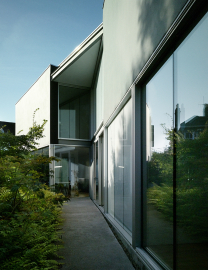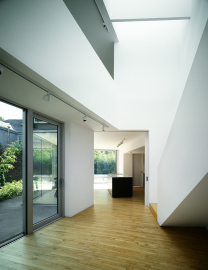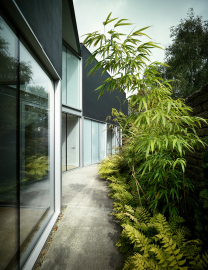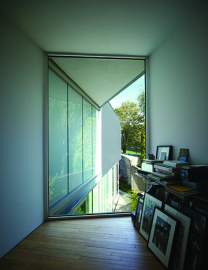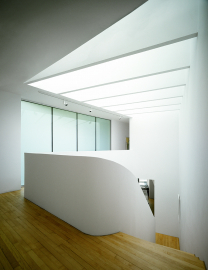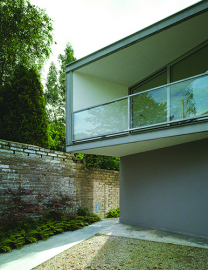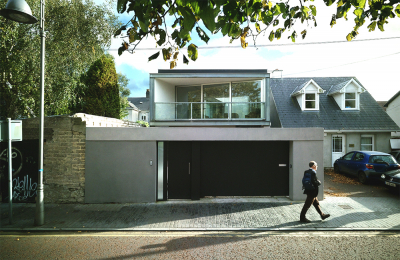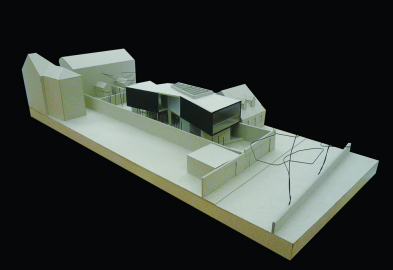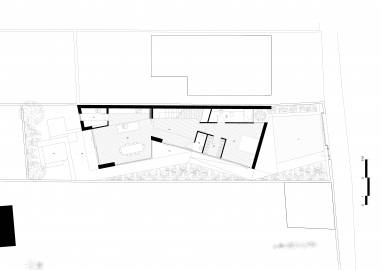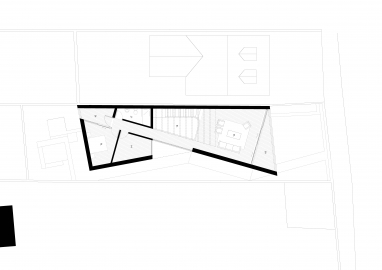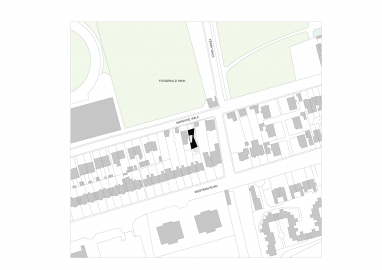Folding House
A long folding house cranks its way down a lengthy garden plot. What first presents itself as a trumpet-like balcony peering over the perimeter wall to the street becomes the final space of the house – a living room that overlooks Fitzgerald Park in the distance.
A long folding house cranks its way down a lengthy garden plot. In contrast with its more reticent next-door neighbour this house confidently acknowledges its urban context by tightly screening itself to the street and more actively opening at the upper level. What first presents itself as a trumpet-like balcony peering over the perimeter wall to the street becomes the final space of the house – a living room that overlooks Fitzgerald Park and the Daly Suspension Bridge in the distance.
On entering from the street a gravelled courtyard is made for off-street car parking. From here one follows a cranking footpath that tightens and expands against the planted perimeter wall. Continuing along this path the volume of the house creases inwards at its south-facing core to breath light and air into a central double-height roof-lit entrance hall. Here a series of deep roof light baffles play with penetrating and reflected sunlight over the course of the day.
Two principal living spaces are located diagonally in section to either side of this central hall: the ground floor kitchen/dining space with aspect onto the rear garden relates diagonally across the hall to the first floor living space. Likewise the two bedroom spaces of the house occupy the remaining diagonal spaces across the hall. Meanwhile an opportunistic studio pinches space from the rear first floor bedroom to offer a window overlooking the entrance. A rear first floor external terrace also admits light without compromising or overlooking the private amenity of neighbours.
While black paint on render is employed externally, white plastered walls are employed internally to create light-filled spaces. Wall surfaces and ceiling soffits fold and flow connecting interior spaces in a sculptural and plastic manner. Glazed screens are used in bold ways throughout the house, in some instances to fold and compress spaces and in other instances to expand and open the house to views beyond.
This site had a number of restrictions that immediately shaped the concept and site strategy:
- a long and deep garden plot
- proximity to neighbours
- favourable orientation to the sun from the side and rear
- the varied and somewhat haphazard character and nature of the mews lane
- budget restrictions
The resulting house attempts to address each concern with a strategy of cranking lines and folding surfaces. Space is purposely squeezed at points in order to enjoy the expansion of space beyond. Walls fold and lead one through the sequence of spaces made within the site and house.
This house employs simple materials and construction: a lightweight steel frame, painted blockwork walls and glazed aluminium-framed infill window and door screens.
Externally the steel frame is exposed where possible. Blockwork is rendered and painted matt black in order to allow the greenery of the garden to be accentuated. Aluminium frames to window and door screens are left as natural anodised.
Internally a recycled maple gym floor is used throughout and interior spaces are painted white.

